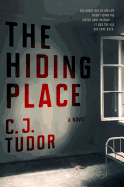
It's late summer, and 40-year-old Joe Thorne has just moved from Manchester to Arnhill, the village where he grew up. He tells everyone that he has returned to pursue a job as an English teacher at his old school, Arnhill Academy, and folks seem to buy it. "People have told me I have an honest face," Joe informs the reader. "Which just goes to show how little people know." The truth is, Joe has returned after two decades away because he received an e-mail from an unidentified source saying, "I know what happened to your sister. It's happening again." "Your sister" is Annie, Joe's younger sibling, who died in Arnhill 25 years earlier; "what happened" isn't immediately clear to the reader.
Joe is replacing a teacher who recently committed suicide, taking her son with her. Joe rents their former home, in which the murder-suicide occurred: "Even in a dump like Arnhill this cottage is the only thing I can afford," he tells the reader, and then confides, "Of course, that isn't the only reason I chose it." Of course it isn't.
As in her creep-tastic debut, The Chalk Man, C.J. Tudor has built a narrator who is an amiable if not entirely transparent stand-in for a conventional thriller's detective. But a conventional thriller The Hiding Place is not, especially given its reliance on horror mainstays like nightmares, a spooky doll and gore galore. Nevertheless, the surprise-abundant book's witty, self-effacing narration is closer to Nick Hornby than to Stephen King. --Nell Beram, author and freelance writer

